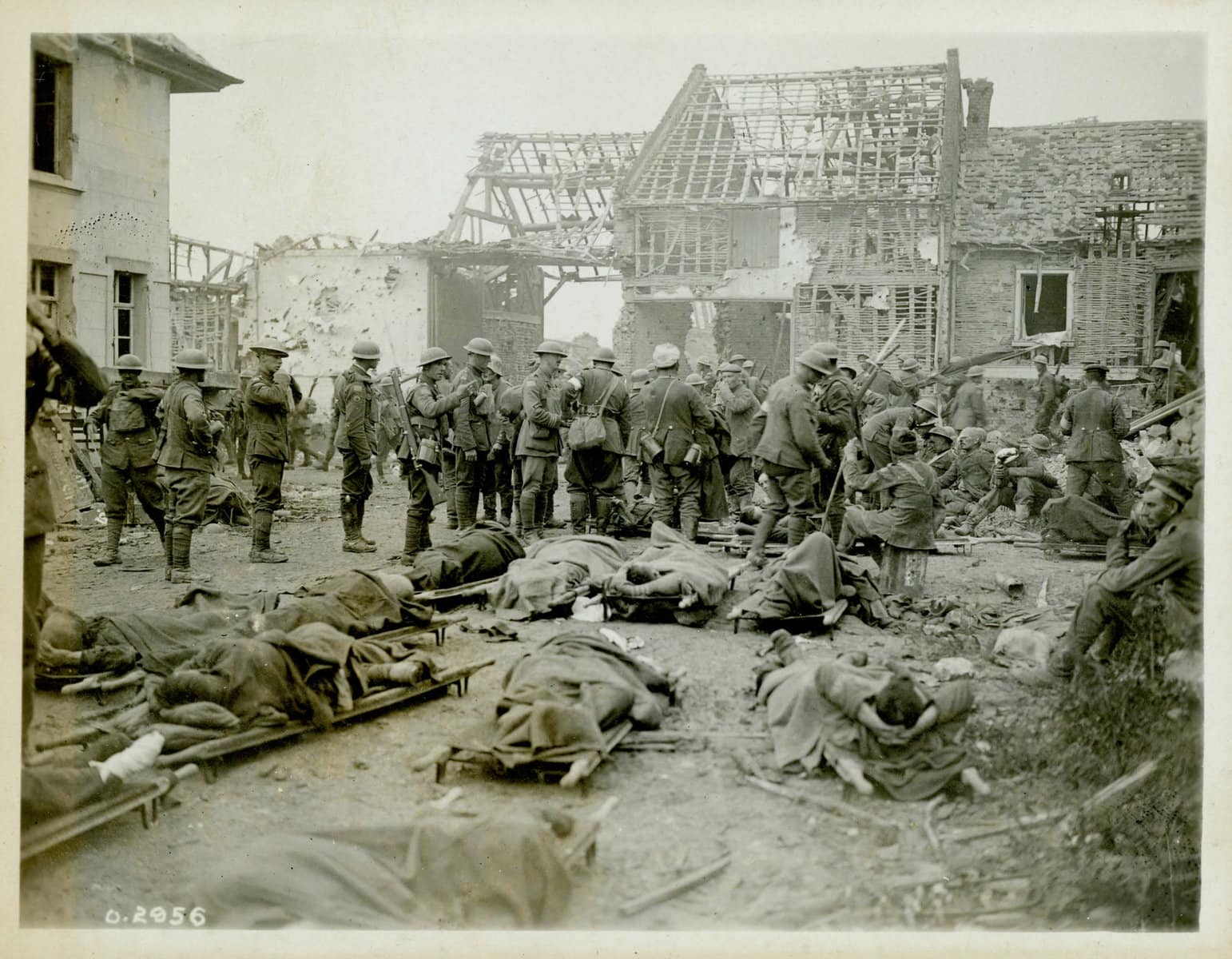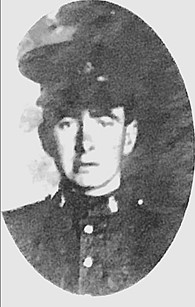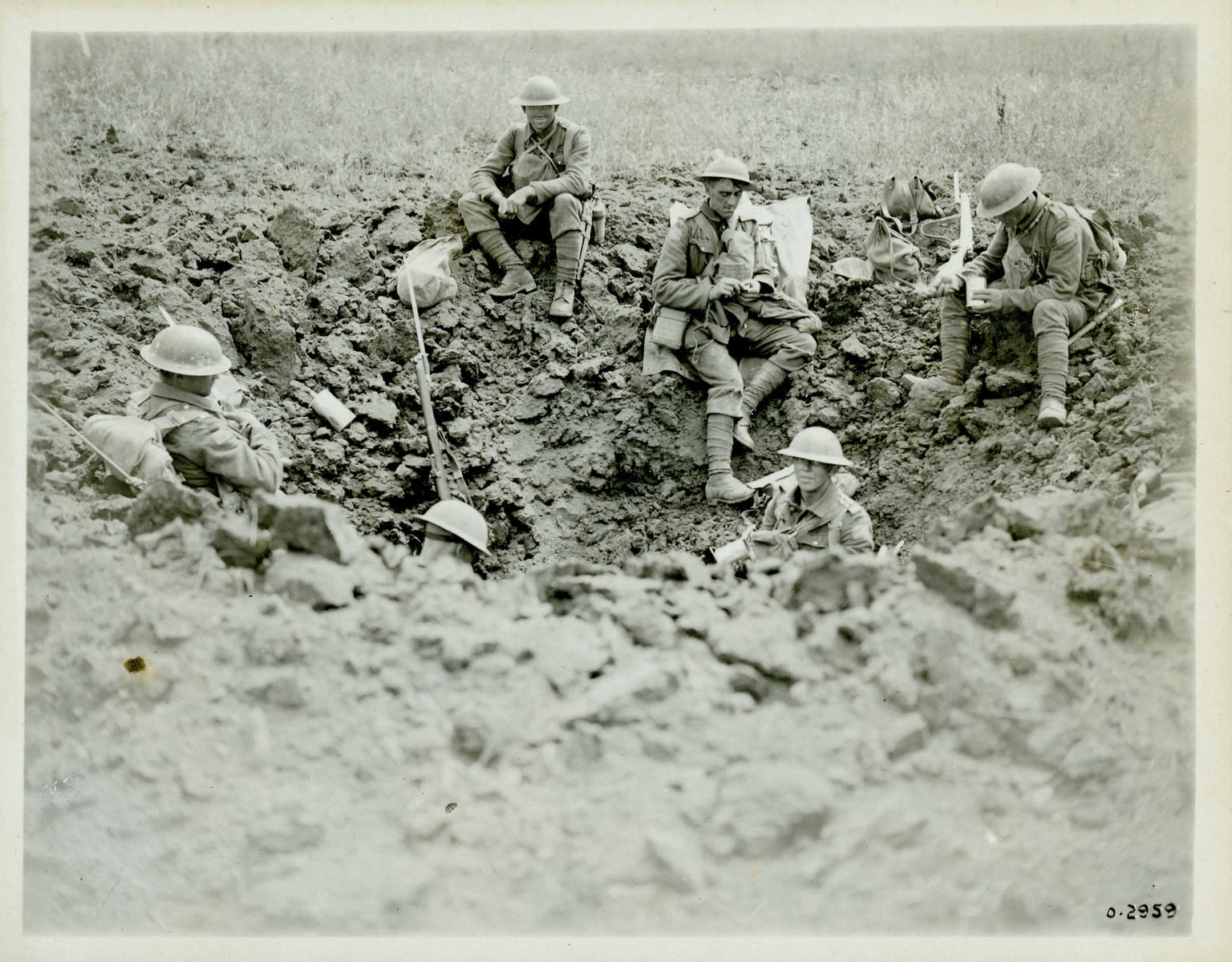In both world wars, there were men killed in action or who died in service who had a connection with Niagara-on-the-Lake but for various reasons were not commemorated on either the memorial clock tower cenotaph in Old Town or the Niagara Township war memorial in Queenston. In some cases, they lived for only a brief time in Niagara and had no family here when the monuments were built. In other instances, they had lived near McNab, not then part of NOTL or Niagara Township. While their names are not read out at the ceremonies at these monuments on Remembrance Day, they too should be remembered.
Ron Dale
Special to The Lake Report
William Dey was born in Aberchirder, Aberdeenshire, Scotland, on March 28, 1894, son of John Dey and Elizabeth Philip.
In April 1913, William emigrated to Canada aboard the SS Athenia, eventually taking up residence in St. Catharines as a grocer.
While listed as a Presbyterian, Dey became a parishioner of Christ Church, McNab, an Anglican church.
That church created a composite photo of local volunteers in the First World War and Dey was included among them, suggesting that he lived in McNab at some point between his arrival in Canada and his enlistment in 1916.
On June 1, 1916, Dey volunteered for active service in the First World War. He was recruited into the 176th Overseas Battalion, associated with the 2nd Dragoons, one of the local militia regiments.
After receiving basic training, primarily at Camp Borden, just west of Barrie, Private Dey was shipped to England.
He sailed from Halifax on April 28, 1917, aboard the SS Olympic and arrived in Liverpool nine days later.
He was then sent to the Canadian training camp at Aldershot, England, for more intensive training, and was assigned to the 12th Reserve Battalion.
On Sept. 27, 1917, Dey was transferred to the 3rd Battalion (Toronto Regiment), Canadian Expeditionary Force, which already was fighting in Belgium.
When he arrived at the headquarters of the 3rd Battalion on Oct. 17, 1917, the battalion was preparing to fight in the Battle of Passchendaele, near Ypres, Belgium. The battle had been raging since Aug. 8 and would continue until Nov. 10, 1917.
While the Canadian Corps commander, Lt.-Gen. Sir Arthur Currie, was studying enemy positions and preparing a plan to drive the German defenders from the Passchendaele Ridge, his soldiers conducted raids across no-man’s land and suffered from German artillery bombardments as they huddled in the front-line trenches.
Finally, on Oct. 26, Currie launched the Canadian offensive.
On Nov. 6, after attacking across muddy ground, pocked with water-filled craters created by heavy artillery fire, the Canadians captured the ruins of the town of Passchendaele. Four days later they captured the eastern edge of the strategically important Passchendaele Ridge.
Casualties were heavy. Some 4,000 Canadians were killed and three times that number wounded. Dey survived without injury.
During the next few months, the 3rd Battalion continued the routine of seemingly endless trench warfare.
The men were posted to the front-line trenches for several days, then moved to the rear areas for rest and re-equipment. After a brief stint in the rear lines, they moved up to the reinforcement trenches and support trenches where they were subjected to more artillery fire.
Soon they were again posted to the front lines, where they carried out trench raids and forays into no man’s land.
On March 21, 1918, the Germans launched a massive counter attack, “Kaiserschlacht” (Kaiser’s Battle), which was an attempt to retake lost ground and break through Allied lines.
They planned to drive northwest and capture the Channel ports, cutting British supply lines, and finally driving the British forces into the sea. While some Canadian units fought in this campaign, the 3rd Battalion was not directly involved.
The Germans were able to recapture a great deal of ground lost over the previous two years but were unable to achieve their main goal of destroying the British forces.
After stopping the German offensive, the Allies went on the attack in what became known as the Hundred Days.
From Aug. 8 to 12, the Canadian Corps fought the Battle of Amiens in Picardy, France, a victory that pushed the German army from the front lines. Further advances forced the Germans back to prepared defences known as the Hindenburg Line.
The Battle of Amiens cost the Canadians 11,822 casualties but Dey continued to survive. The Canadians continued to attack and Dey remained uninjured.
On Aug. 30, Dey’s luck finally ran out.
According to the official report, “During an attack on the enemy trenches … he was hit by a machine-gun bullet and although immediately evacuated, succumbed to his wounds.”
Fifty-three of his 3rd Battalion comrades were killed and many more were wounded that day.
Pte. William Dey rests in the Aubigny Communal Cemetery in Arras, France.
- On the heels of The Lake Report’s 53-part “Monuments Men” series, which exhaustively documented the story of every soldier commemorated on the town’s two cenotaphs, Ron Dale’s “Missing in Action” stories profile Niagara-on-the-Lake soldiers who died in wartime but are not listed on the town’s monuments.












